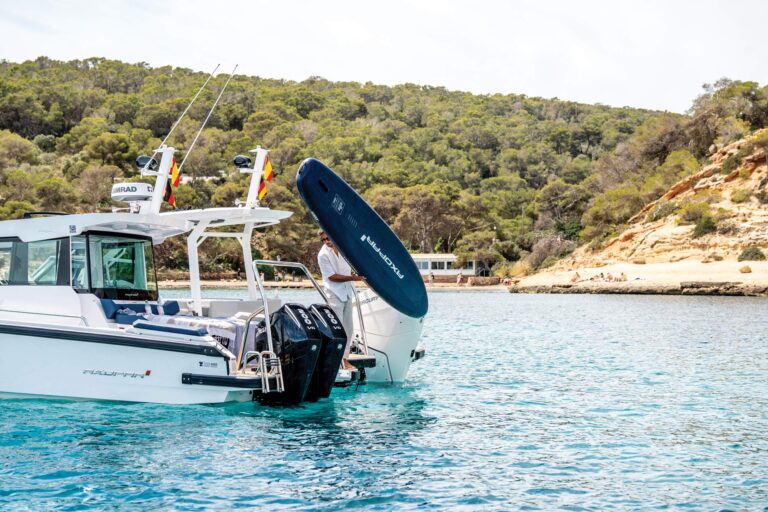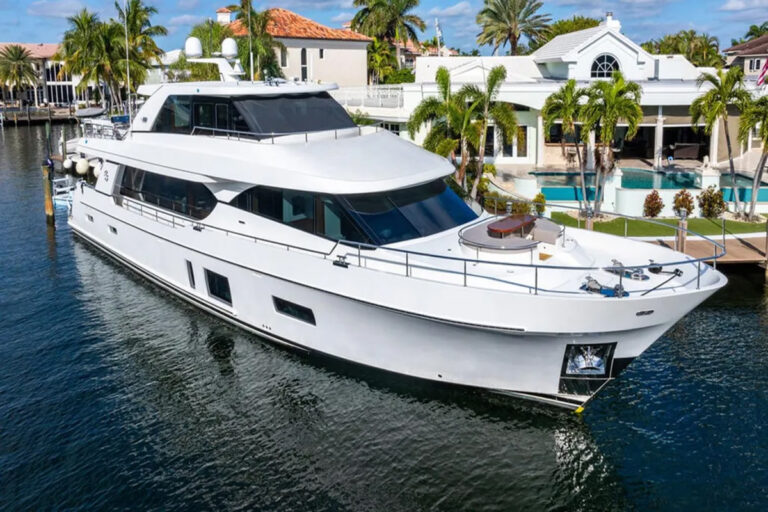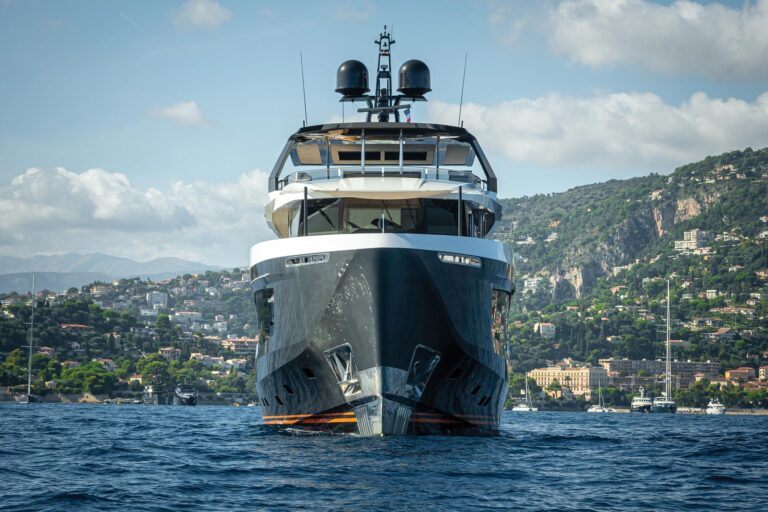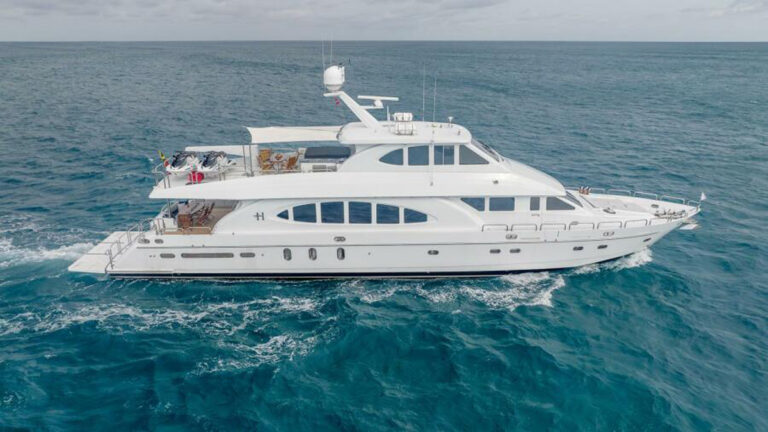Many readers may recognize the brand name Leica in connection with fine 35 mm cameras. Leica Geosystems is an entirely separate company, but it adheres to the same tradition of producing impressive, innovative products, including the new MK 40.
The MK 40 is an excellent GPS navigator. The unit I put aboard my boat had an MX 412B antenna that contained the low-frequency beacon receiver and H-field antenna required for differential GPS accuracy. Initial satellite acquisition was rapid even though the unit, having been shipped to us from a distance, had to acquire a new almanac.
I began exploration of the MK 40 in my usual way, trying to operate it without thoroughly reading the 100-plus page manual. I like to think this approach provides a quick evaluation of the design’s user-friendliness, though I’m more or less gauging the degree to which the designers and I think alike. The MK 40 was easy to manage, with obvious functions for the seven dedicated keys and cursor control. The five soft keys were clearly identified by the on-screen legends in various operating modes and menus.
Leica claims the MK 40 provides precise navigation data from the DGPS system (although the specified accuracy of a position fix is stated as 15 meters, typical, SA off). I didn’t take the device to a known survey benchmark, but I did compare its positions with those of two other DGPS units. The only significant difference I noted was the Leica’s on-screen position readout, which shows four figures to the right of the decimal point, reading to 1/10,000 of a degree of latitude or longitude. Most other GPS navigators show two or three digits after the decimal point. For comparison, 1/10,000 of a degree of latitude equals 7.29 inches.
I moved the antenna against a ruler in a north-south direction, and the least significant digit of latitude did indeed change about every 8 inches. Although a position display to 4 decimals won’t be of much use when you’re trying to find a channel marker in the fog, it is reassuring to know the system is watching every two-thirds of a foot of your boat’s movement.
This level of resolution is valuable when calculating the vessel’s speed and course. Some other DGPS navigators perform to this level of resolution, but because they do not display the fourth decimal, the data is available only by viewing the NMEA output data stream. The Leica’s position was reassuringly unchanging while the boat was secured to the dock, and I have confidence in the unit’s position accuracy.
The MK 40’s 6.4-inch diagonal LCD has a resolution of 320-by-234 pixels, and it displays images in 16 colors. This sunlight-readable LCD is satisfactory for all basic GPS functions and for displaying C-Map CF-95 chart information, but the relatively small size has limitations. The MK 40’s chart plotter functions will be a useful addition to most navigational suites, but should only be used in conjunction with an official chart, as is the case with all small-screen chart plotters. A navigator needs to maintain a larger frame of reference than is practical with any chart display of such limited size. Situational awareness is tough with a chart smaller than 16-by-20 inches.
Detail specifications are at the high end of the spectrum. Maximum velocity is stated as 2,125 mph with acceleration of 4g, well above the requirements of any yacht I know. Initial satellite acquisition time and reacquisition time are reassuringly quick. Sailors will appreciate this capability because GPS typically drops off-line when engines start without power from an isolated power bus.
The low cost of digital memory and processors is evident in the unit’s ability to store 3,000 waypoints and marks, each identified by up to 10 alphanumeric characters. The route storage register holds 100 reversible routes, each composed of 150 or fewer waypoints. The position-plotting log can store 8,000 points. About the only way to run out of memory is to use the MK 40 on a hydrographic survey ship, in which event you download the data to a computer or a plug-in C-MapNT card, which stores up to 48 megabytes.
Navigation displays include all the usual suspects: satellite status, position, waypoint and a road-like steering image. All displays are well designed. The typography is excellent and makes data unusually easy to read, even from a distance. Virtually everything the user needs to know is on screen, with important parameters in large, bold type. In position mode, the vessel’s lat/lon, COG and SOG dominate, but the screen also shows a wealth of supporting data in small but readable type. The waypoint screen is similarly clear and unambiguous, with identification for the five soft keys at the bottom of the screen.
Creating or editing a waypoint is uncomplicated, thanks to the highly intuitive scrolling system. Some users may value the 16 icon choices available for waypoint identification on the chart.
The steering display will be familiar to anyone used to today’s GPS units. The steering screen uses color for the boat icon to emphasize cross-track deviation. A green boat icon is good, and a red boat icon means “do something differently.” This bit of display technology will be especially helpful when the helmsman is navigating in hectic, less-than-ideal conditions.
The display is clearly visible in direct sunlight, but the lowest light level for night use appeared a bit too bright. The chart screens can be used with or without a C-Map cartridge. A helpful use will be when leaving an unmarked cove. You can use, in reverse of course, the record plotted when you entered.
Data from a compatible depth sounder may be displayed on the position or navigation screens. The latter can be especially useful by providing a COG-related record of water depth and bottom contour. Access to the set-up menu is easy, with an excellent built-in simulation mode. The unit’s choice of languages-English, French, Spanish, Italian, German, Dutch and Swedish-may intimidate users who barely get along in our native tongue, but may be useful when friends are on board. Price: $2,795 without DGPS; $3,995 with.
Contact: Leica Geosystems Inc.; www.leica-geosystems.com.









